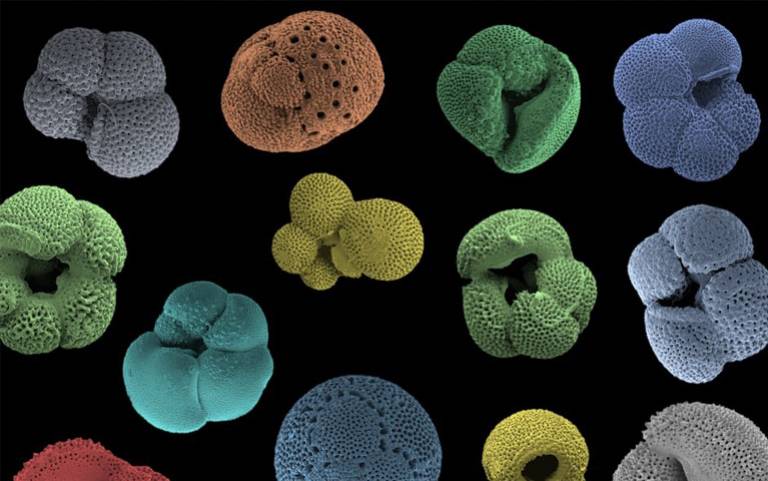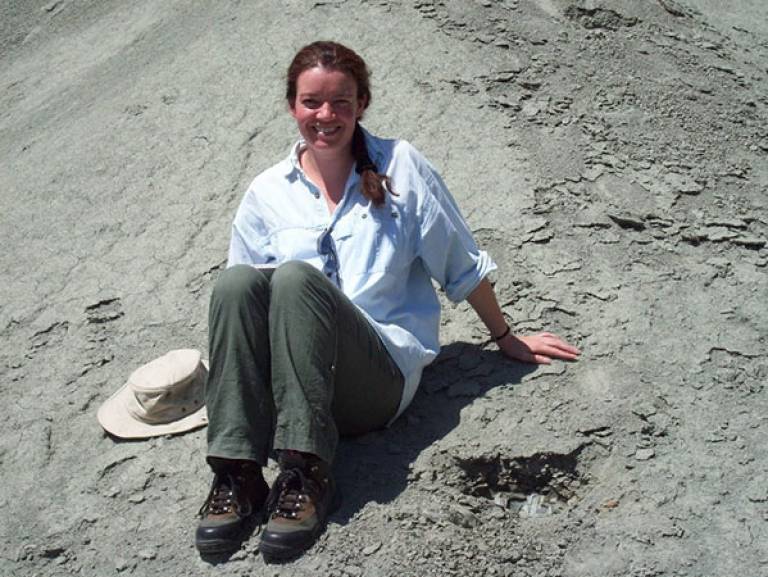Research: Time and Time Again at UCL
7 December 2020
From time-to-time, a sustained & lengthy international collaboration comes together to compile a global time scale for Earth history.

Image Caption: Miocene calcareous microfossils (planktonic foraminifera) used as time markers in oceanic sediments.
From time-to-time, a sustained and lengthy international collaboration comes together to compile a global time scale for Earth history. The latest version, termed GTS2020 (A Geologic Time Scale 2020) has just been published. It features contributions as chapters from four staff in UCL department of Earth Science - Bridget Wade, John McArthur, Graham Shields and Ying Zhou, and Honorary Professor of Mathematical Geology, Richard Howarth. Unlike the Time Lords of Doctor Who, the UCL staff utilize a range of different methods to travel through time and date geological events. According to Professor Wade
““our understanding of geological time is not static, but constantly evolving. I use the sedimentary record from deep sea cores from the International Ocean Discovery Program, as new records become available and coring technologies improve, it allows us to examine events at much higher resolution than previously”.
A fundamental goal of Earth Science is to place numerical dates on all rocks, so that the progression of life on Earth can be accurately deduced. The contribution of McArthur, Shields and Zhou is to update and refine one of the methods of doing so – the use of 87Sr/86Sr in sediments to place numerical ages onto sedimentary rocks. It is a constant task to upgrade and define the calibration curve that allows us to do so – dealing, for example, with constantly shifting definitions of stratigraphic boundaries and fossil names, and increasing accuracy and precision of measurement of 87Sr/86Sr that regularly makes earlier work redundant. The task is never ending.

Professor Shields adds that the geological time scale is continually being revised, especially at its lower end with each new GTS volume moving us further away from a purely numerical subdivision of Precambrian time using rounded ages, towards a chronostratigraphic scheme that frames our planet’s history using major events recorded in the rock record, such as the Great Oxidation Event around 2.4 billion years ago.
The new GTS also includes recent work by UCL early career scientist’s Dr Anna Joy Drury and Dr Alessio Fabbrini.
- Prof Bridget Wade's academic profile
- Prof John McArthur's academic profile
- Prof Graham Shields' academic profile
- Dr Ying-Zhou's academic profile
- Geologic Time Scale 2020
 Close
Close

